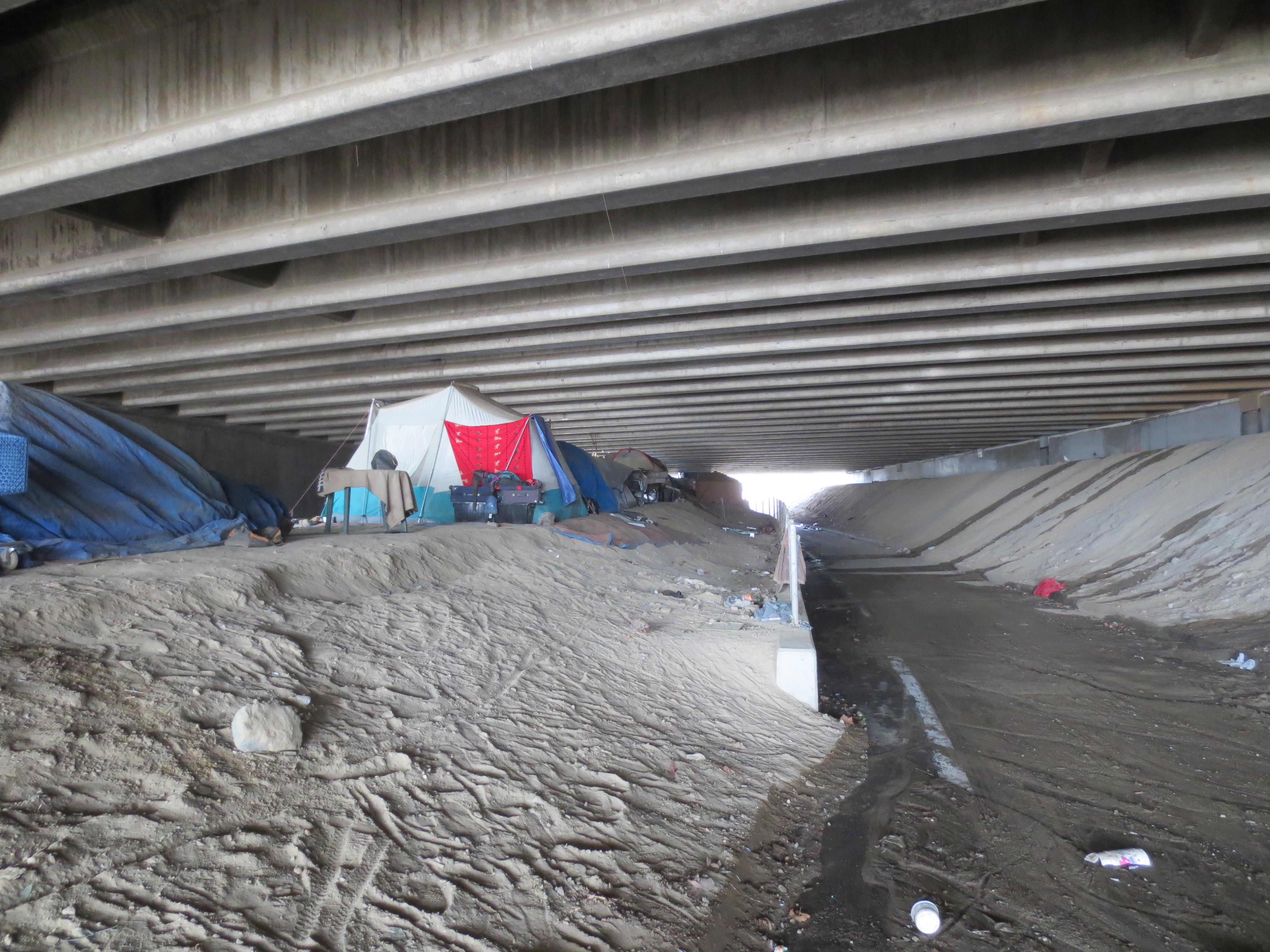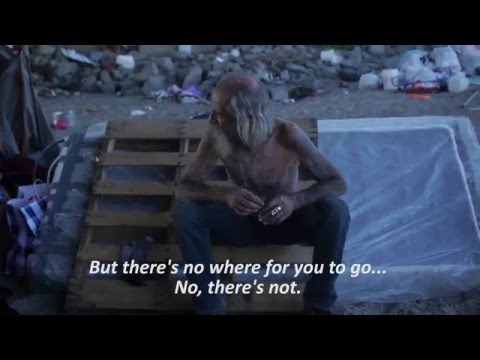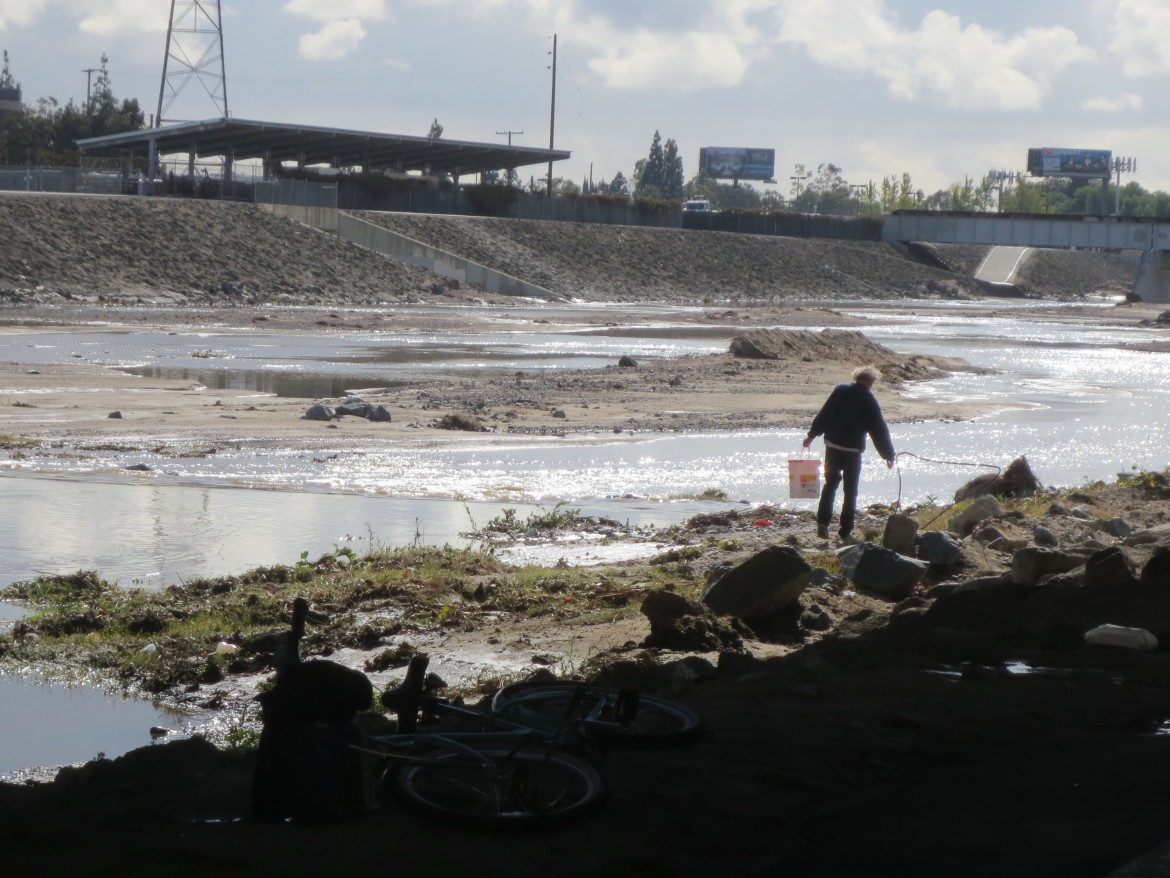In Orange County more than 2,000 individuals are homeless on any given night. Many struggle to survive in communities that criminalize their mere existence yet provide no meaningful resources to help them move off the streets and into long-term supportive housing.
This week, however, brought a new level of anxiety for individuals who are homeless as the first of many El Niño storms moved across Southern California, bringing heavy rains and near freezing temperatures.
For many living under freeway passes or along the riverbed, the rains only pushed them deeper into misery. Some tried to protect their few belongings while trying to avoid contact with police, who they say frequently ticket them for sleeping in public or conduct random searches of their tents. Others simply rode out the storm without any shelter.
The situation was only made worse by a county miserably ill-equipped to deal with the storm despite having made public pledges to the contrary.
Last month, county officials promised to spend $500,000 to establish a rapid response system that would provide emergency shelter to the estimated 400 individuals living along the riverbed. Yet as the storm passed there was no sign of any kind of coordinated government response.
Instead, what many residents along the riverbed described, was a county without a plan to help some of its most vulnerable residents.
A few of their stories:
Greg, 63, a resident of an encampment under the Katella Avenue Bridge:
“Some cop came by the other day and said a big storm is coming. A lady was with him. I think she was with mental health services. The only thing she told us was we might think about going to a shelter, but that’s not going to happen. They just take your things and you have to wait to get in. Besides, I lived in the armory and it was awful. You get sick and it’s not a good place.”
Jeff Buckley, 48, a resident of riverbed encampment under the 5 Freeway.
“I don’t see a difference from last year to this year’s response. Maybe, you see more police, but there ain’t no real difference. The cops just come by and tell you it’s going to rain and to stay up top and watch the water level so you don’t get swept away. But that’s about the only difference I can see from what they did last year and this year. I’ve been on the streets since 2007, and the truth is no one has ever really come out here to help us. The only time the police come out here is to harass everybody. They come and start asking you for your name and if you are on parole, and then go through your stuff.”
Tammy Schuler, 40, a resident of an encampment by the Chapman Bridge.
“I stayed here when it rained but I got a daughter, so my mom and I pooled our money together, and I sent them to a motel to ride out the storm. I had to stay here and make sure our things were ok. I don’t know about help, but I heard a couple of people say that a lady came by to tell people it was going to rain but that was it. The only thing different this year from last is more people coming around with food and tents and stuff, but those are charities and church groups, not the city. I try to stay out of trouble. We tend to stay here by the riverbed because if you go to a park then the cops harass you. I guess they worry about the kids, and folks don’t want you. I don’t want to wind up with a ticket so I stay here and keep to myself.”

Tina Abbott, 56, a resident of a riverbed encampment under the 5 Freeway.
“I just got out the hospital sometime in November, I think. I was hit by a car and had back surgery. It’s been tough. Some church groups have come down around Christmas time. They gave us stuff we needed. But we lost a bunch of stuff because we went to Mercy House (a shelter) and when we came back all our stuff was lit up. I lost my shoes and I’m supposed to be using a walker but I can’t get one right now. We’re starting from scratch. We’re just trying to stay dry. I applied for housing but I can’t seem to get it because if have a felony from 30 years ago.”
Sandra Hernandez is communications director at the ACLU of Southern California.




